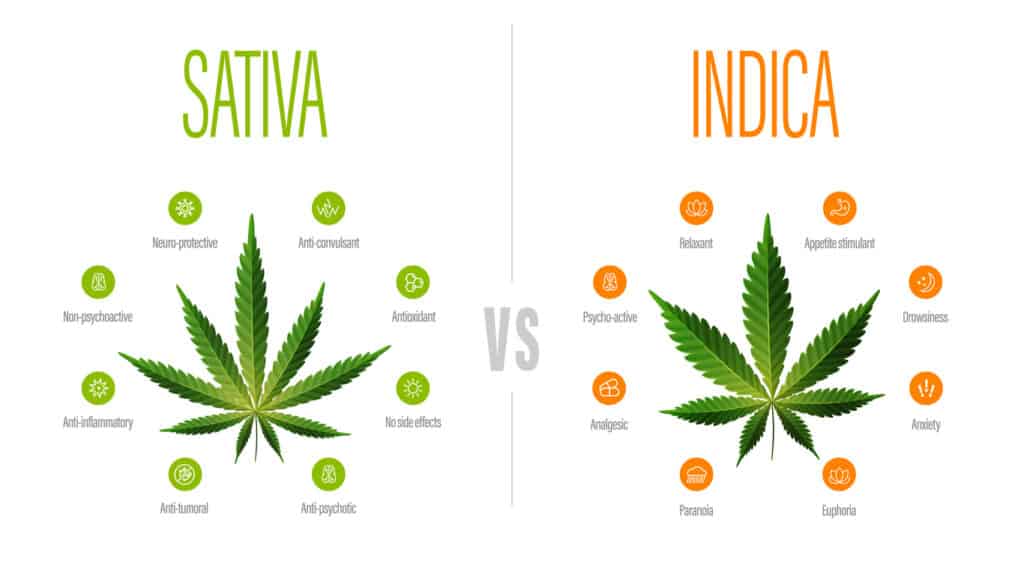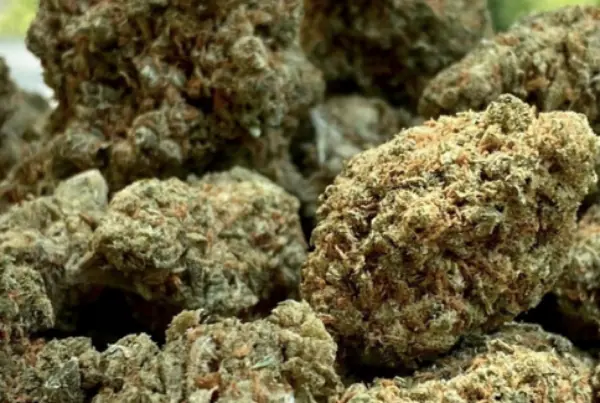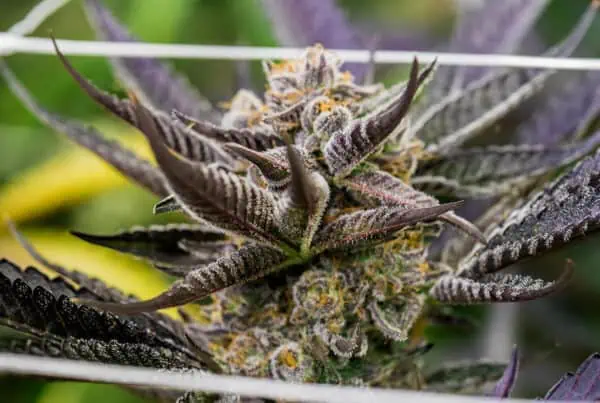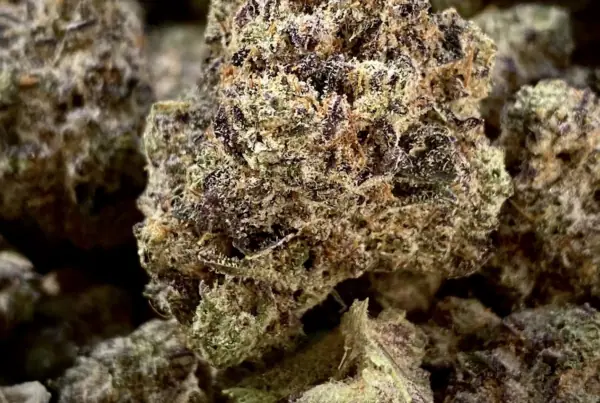TABLE OF CONTENTS
The popularity of indica strains continues to soar.
Unlike the stimulating, motivational high that defines the sativa experience, indica use is calming and provides a great way to wind down after a busy day.
Those who prefer it know exactly what to expect from a good indica, and many of them avoid sativa altogether because of its racy effects and the anxiety it sometimes creates—which is unpleasant and anything but relaxing.
For these cannabis users, sativa just won’t do. They’re looking for something quite different and that is where indica effects can come in handy.
Indica and Sativa Differences
When you consider the origins of indica strains, it’s easier to understand their differences from sativa. Indica originally came from entirely different areas of the world than sativa.
The plants differ in appearance as well, with sativa having thin leaves and reaching lofty heights compared to indica, which has wide leaves and a stocky plant structure.
Sativa also tends to be a brighter, lighter green color, while indica often is a deeper, darker green.
Like sativa strains, indica strains are a species within the genus Cannabis. The two species names are now in such widespread use today that they’ve also become the common names for these two major varieties of marijuana.
The species name indica literally translates as “from India,” since India is the area where the first plants were collected and described in scientific literature by Jean-Baptiste Lamarck in 1785.
Since then, the species was also found in Afghanistan, where it has been used extensively for the production of hashish.

The Indica Effects
Both recreational and medical cannabis users enjoy indica for many of the same reasons. The relaxed, euphoric, and sedative effects can be quite pleasant.
For many users, smoking or vaping a fine indica is similar to relaxing with a glass of wine, brandy, or scotch. It’s a rewarding practice to consume indica after putting in a long day at work.
While some cannabis enthusiasts always prefer indica over sativa and frequently enjoy it as a “wake and bake” activity, indica will not promote the desire to get out and engage in physical activities like swimming or hiking—or merely shopping or running errands—like sativa will.
Indica consumption will usually result in a “couch lock” effect, leaving the user perfectly satisfied to stay indoors and do nothing more adventurous than watch a movie.
For this reason, smoking indica is a fantastic day-ending treat—much like enjoying a snifter of fine brandy.
Medical patients rely on indica for relief from a wide range of conditions. Cancer patients who are undergoing chemotherapy reach for indica when they need pain relief or an appetite stimulant.
Those with insomnia find that indica provides all they need for a good night’s sleep and eliminates the need for sleeping pills. Those who battle glaucoma find that it decreases eye pressure and the blinding effects of this debilitating ocular disease.
And there is increasing evidence that indica benefits a wide range of physical conditions and diseases, ranging from diabetes to migraine headaches. Cannabis-infused masks with indica have been shown to help with acne and oily skin.
If you ask someone who loves cannabis if they prefer indica or sativa, most of the time you’ll hear a simple, straightforward answer declaring one or the other as the person’s favorite.
Experienced cannabis users who are thoroughly familiar with the effects of both species may answer the question quite differently, with a comment like, “There’s a time and a place for each one.”
Since it’s difficult to speak in absolutes with cannabis, this response makes a lot of sense. The same person who wakes up on a weekend and smokes some sativa right before breakfast will find the motivation to go hiking or head out to go shopping at a farmer’s market.
After dinner that night, this same person might find intense enjoyment and relaxation from an indica while they watch the latest popular movie.
What Does Indica Feel Like? (Indica Effects)
Indica’s effect on the human body is usually referred to as a “stoned” or a “body high.” This means its effect is felt more throughout the body rather than in the head. Indica tends to enhance senses such as sound, touch, and smell, though it also leaves its users extremely relaxed, and sometimes even drowsy.
Its high can also be described as being a lethargic and almost “lazy body high.”
Despite being extremely relaxing, it sometimes produces a heavy bodily feeling causing most users to just sit down and relax. This effect is referred to as “couch lock”.
While Indica strains could sometimes inspire some creativity, they generally cause shorter spans of attention.
The most prominent effects of Indica revolve around relief. Indica has the ability to relieve stress, anxiety, migraines, body pain and even spasms.
It can also relax the muscles and reduce the frequency of seizures one may be experiencing. Indica reduces nausea and helps fight depression.
The other effect that Indica is generally known for is its potential to sedate. This could be effective even in relatively low doses. Because of this, it is often used a sleep aid and is best suited for night time use.
Best Indica Strains
Hindu Kush: This is a pure Indica strain from the Kush mountain range. It gives a calm and relaxing cerebral high. It is great for unwinding.
Northern Lights: Also a strain that has stood the test of time. It has a hard-hitting body high which will leave you couch-locked with serious munchies.
Granddaddy Purple: This is a classic purple flower that is very attractive. First made in 2013 by crossing Purple Urkle with Bid Bud, this is a pleasant smoke reminiscent of a bag of grapes.
Blueberry: This strain has Afghani roots and happy relaxed high that will also make your body feel slumped-over.
9 LB Hammer: This will give you a heavy head high that creeps into your body leaving you couch-locked for the next hours.
Forbidden Fruit: This is a cross between Chery Pie and Tangie. It tastes like a fruit cocktail and has a lighter high that can be described as a relaxing euphoria.
“
There are over 300,000 jobs in the cannabis industry. CTU trained me for one of them!

Makes $24.50 @ THC +
G-13: It is rumored that this was a Government experiment to put 13 of the best Indica strains together and was only given away by a disgruntled agent.
Conclusion on Indica Effects
Anecdotal evidence has long suggested that Sativa strains are more energizing and that Indica ones are more relaxing.
This holds true in a very large number of both Indica and Sativa strains, especially native ones. However, it has recently emerged that this is not a hard and fast rule. While the basic characteristics hold, variations are a dime a dollar.
The different chemical compounds that constitute each strain end up having a cacophony of effects that could be both medical and recreational, and differ from strain to strain or even batch to batch.
That said, we hope this guide to Indica effects has shed some light on what the traditional effects of Indica are, their benefits and how you can consume them.

Gavin Kushman
Gavin is a worldly adventurer and cannabis connoisseur, embarking on journeys that take him to the far corners of the globe to explore and document the varied effects, flavors, and histories of both renowned and lesser-known strains. From the misty high-altitude farms of the Hindu Kush highlands to the vibrant cannabis cafes of Amsterdam, Gavin's quest for knowledge spans continents. A recognized authority in the cannabis industry, he frequently lends his expertise to leading publications such as Cannabis Training University, where his captivating blog articles chronicle his unique experiences with different cannabis strains.












 Jeff was involved in an accident where he endured a traumatic brain injury. He had a week-long stay in ICU where brain surgeons
Jeff was involved in an accident where he endured a traumatic brain injury. He had a week-long stay in ICU where brain surgeons  100% risk free money back guarantee within 48 hours after purchase if student has not completed any of the courses or exams.
100% risk free money back guarantee within 48 hours after purchase if student has not completed any of the courses or exams.